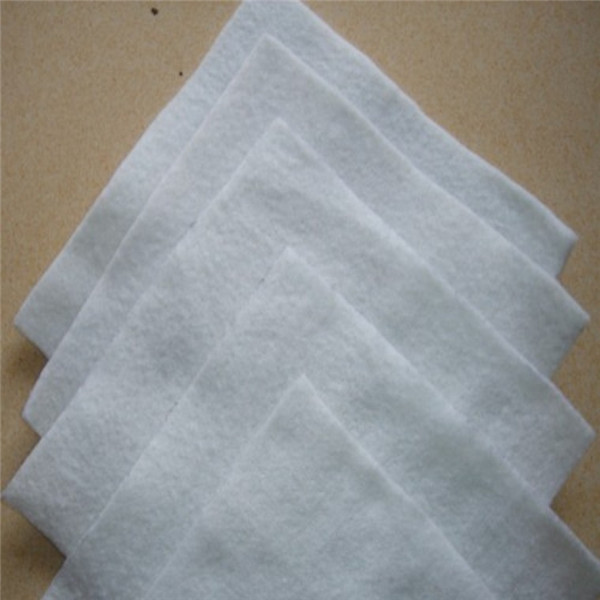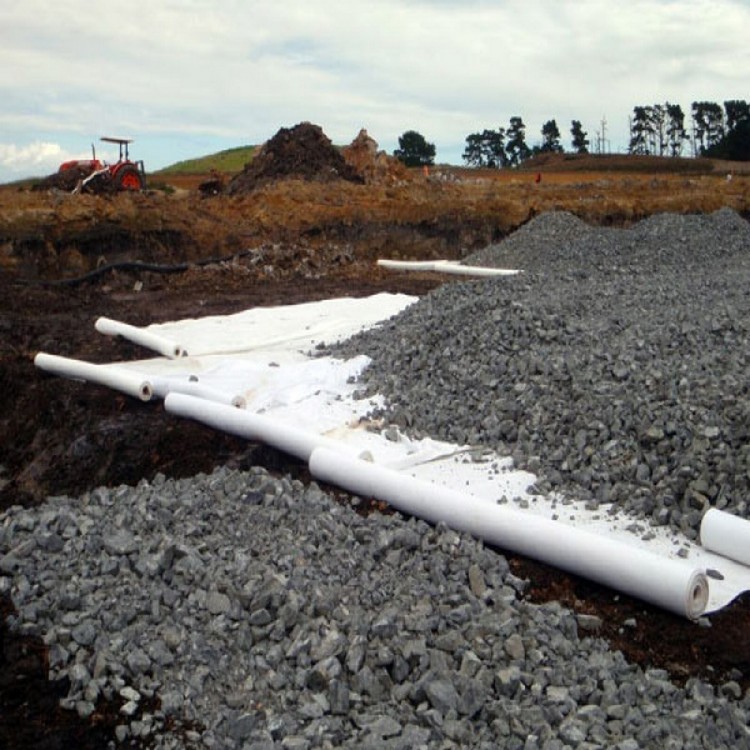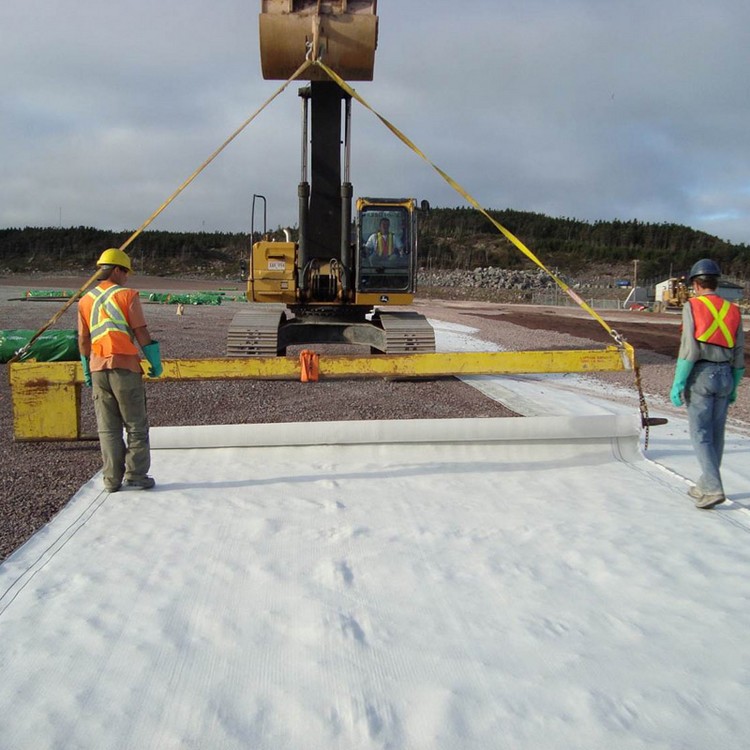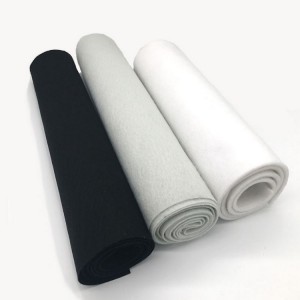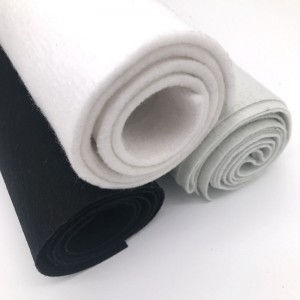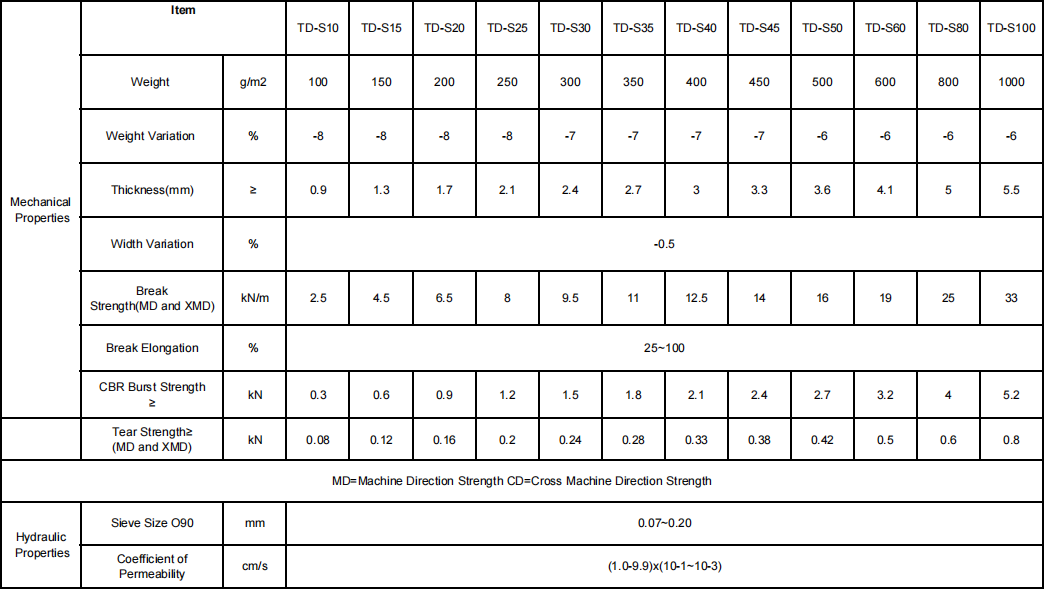Polyester Short Fiber Needle Punched Nonwoven Geotextile For Road Dam Landfill Highway
Product Features
2. Polyester nonwoven geotextile has good mechanical properties, good water permeability, corrosion resistance and aging resistance.
3. Polyester nonwoven geotextile has strong anti-burial and anti-corrosion performance, fluffy structure and good drainage performance.
4. Polyester nonwoven geotextile has good friction coefficient and tensile strength, and has geotechnical reinforcement performance.
5. Polyester nonwoven geotextile has the functions of isolation, filter, drainage, protection, stabilization and strengthening.
6. Polyester nonwoven geotextile can adapt to uneven foundation, resist construction damage and creep is small.
7. Good overall continuity, light weight and convenient construction
8. Polyester nonwoven geotextile is a pervious material, so it has good filtering and isolation function and strong puncture resistance, so it has good protection performance.
Utilize the good permeability and water permeability of Geotextiles to make water flow through, so as to effectively intercept sand loss;
Polyester nonwoven geotextile has good water conductivity. It can form drainage channels inside the soil and drain excess liquids and gases out of the soil structure.
Use Geotextiles to enhance the tensile strength and deformation resistance of soil, enhance the stability of building structure, and improve the quality of soil;
Effectively diffuse, transfer or decompose the concentrated stress to prevent the soil from being destroyed by external forces.
Prevent the mixing of sand, gravel, soil and concrete in the upper and lower layers;
The mesh is not easy to clog. The mesh structure formed by the amorphous fiber tissue has the characteristics of strain and movement.
High permeability can maintain good permeability under the pressure of soil and water.
Product Parameters
Weight: 100g/m2 -800g/m2(customized)
Width: 1m – 6m (customized)
Length: 20m-200m (customized)
Color: Black, white, grey, green,etc.
Application and After-Sales Service
(1) To reinforce the backfill of retaining wall or to anchor the face plate of retaining wall. Build wrapped retaining walls or abutments.
(2) Reinforcing flexible pavement, repairing cracks on the road and preventing reflective cracks on the road surface.
(3) Increasing the stability of gravel slope and reinforced soil to prevent soil erosion and freezing damage at low temperature.
(4) The isolation layer between ballast and roadbed or between roadbed and soft ground.
(5) The isolation layer between artificial fill, rockfill or material field and foundation, and between different frozen soil layers. Filtration and reinforcement.
(6) The filter layer of the upper reaches of the initial ash storage dam or tailings dam, and the filter layer of the drainage system in the backfill of the retaining wall.
(7) The filter layer around the drainage pipe or gravel drainage ditch.
(8) The filters of water wells, relief wells or oblique pressure pipes in hydraulic engineering.
(9) Geotextile isolation layer between highways, airports,
(10) Vertical or horizontal drainage within the earth dam, buried in the soil to dissipate the pore water pressure.
(11) Drainage behind impervious geomembrane or under concrete cover in earth dams or embankments.
Construction Laying
Filament Non woven Geotextile installation :
1, with manual rolling install, filament non woven geotextile surface need to be level off, and appropriate deformation allowance.
2. The installation of Filament Non woven Geotextile or short fiber non woven geotextile usually adopts several methods of lap joint, suture and welding. The width of suture and welding is generally more than 0.1m, and the lap width is generally more than 0.2m.Geotextiles that may be exposed for a long time should be welded or sewn together.
3. Geotextile suture:
All stitches must be continuous (for example, point stitches are not allowed). Filament Non woven Geotextile must overlap at least 150mm before overlap. The minimum stitch distance from the edge (the exposed edge of the material) should be at least 25mm.
The Filament Non woven Geotextile joints that have been sewn most include 1 line of cable locking chain stitch method. The thread used for suture shall be resin material with a minimum tension of more than 60N and shall have the same or greater resistance to chemical corrosion and ultraviolet radiation as geotextile.
Any "needle leakage" on the geotextile must be re-sewn where it is affected.
Appropriate measures must be taken to prevent soil, particulate matter or foreign matter from entering the geotextile layer after installation.
The lap joint of cloth can be divided into natural lap joint, seam joint or welding according to the topography and use function.
4. In the construction, the HDPE geomembrane above the geotextile shall be overlapped naturally, and the HDPE geomembrane on the upper layer , the filament non woven geotextile shall be seamed or welded by hot air. Hot air welding is the preferred connection method of filament geotextile, that is, the connection of two pieces of cloth with hot air gun is instantly heated at high temperature, so that part of it reaches the melting state, and immediately use a certain external force to make it firmly bonded together. In wet (rain and snow) weather can not be hot adhesion connection, geotextile should adopt another method a suture connection method, that is, special sewing machine for double suture connection, and the use of anti-chemical ultraviolet suture line.
The minimum width at suture is 10cm, the minimum width at natural lap is 20cm, and the minimum width at hot air welding is 20cm.
5. For seam joints, the same quality as geotextile should be used, and the suture line should be made of materials with stronger resistance to chemical damage and ultraviolet irradiation.
6. Geomembrane shall be laid after the geotextile laying and approved by the on-site supervision engineer.
Basic requirements for Filament Non woven Geotextile laying:
1. The joint shall intersect the slope line; Where there is balance or potential stress with the foot of the slope, the horizontal joint distance shall be greater than 1.5m.
2. On the slope, anchor one end of Filament Non woven Geotextile, and then lay down the roll material on the slope to ensure that the geotextile stays tight.
3. All Filament Non woven Geotextile shall be pressed down with sandbags, which shall be used during the laying period and retained to the upper layer of materials.

